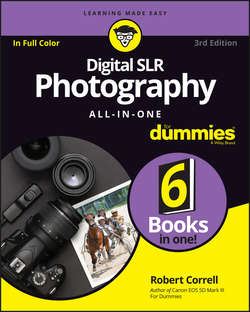Читать книгу Digital SLR Photography All-in-One For Dummies - Robert Correll - Страница 4
На сайте Литреса книга снята с продажи.
Book 1
Pursuing Digital SLR Photography
Chapter 1
Embracing Digital SLRs
Introducing the Digital SLR
ОглавлениеThe digital SLR (also known as dSLR or DSLR) is the modern, digital descendant of the 35mm film-based camera called the SLR. Both types of camera are shown in Figure 1-1. In many ways, the relatively new Nikon dSLR on the left is a direct technological descendant of the much older Nikon FE2 film SLR on the right.
FIGURE 1-1: Digital SLRs (left) have come a long way from its predecessor (right).
SLR stands for single lens reflex, and it identifies a class of camera with two unique characteristics: They have something called a reflex mirror, which enables the camera to use a single lens. Here are some details:
❯❯ Reflex mirror: SLR cameras use a hinged reflex mirror (reflex means that it moves) to, when lowered, reflect light that enters the camera through the lens and bounce it around inside the camera body for various purposes. When you press the shutter button, the mirror moves up and out of the way, allowing light to expose the film or be collected by the image sensor when the shutter opens.
❯❯ Single lens: SLR cameras can therefore use a single lens for all viewing, focusing, and metering. While that does not sound earth-shattering to us today, there was a time when photographers had to resort to using additional lenses or other mechanical devices (such as a framing rectangle on top of the camera) to view the scene and focus. Through-the-lens viewing, composing, metering, and focusing means that what you see is what you’re going to get when you take the photo.
SLRs and dSLRs also feature an interchangeable lens design. Although this isn’t a unique property, it's often thought of as a defining characteristic. Lenses attach to the camera body and can be removed, making it possible to use different lenses with different qualities for different purposes.
